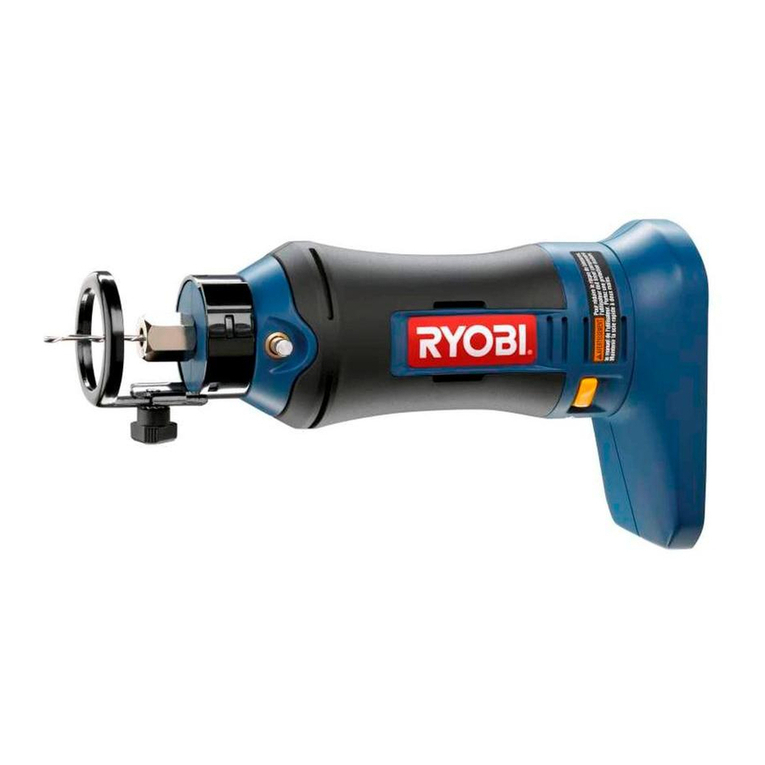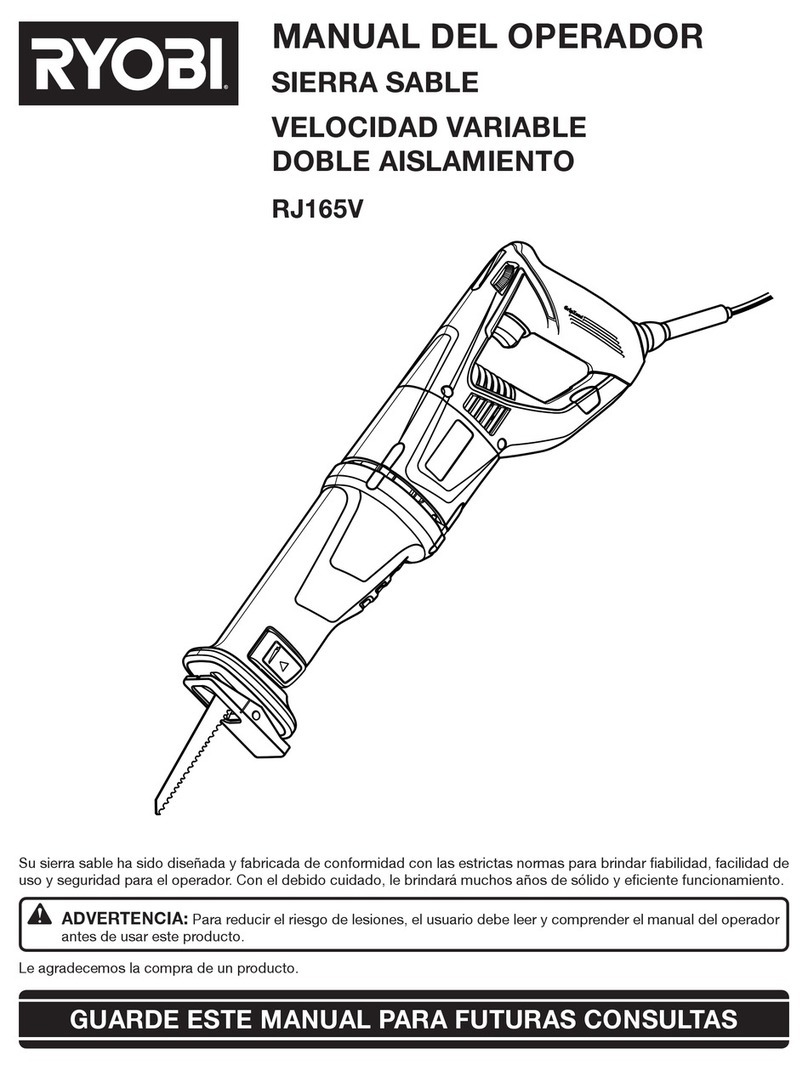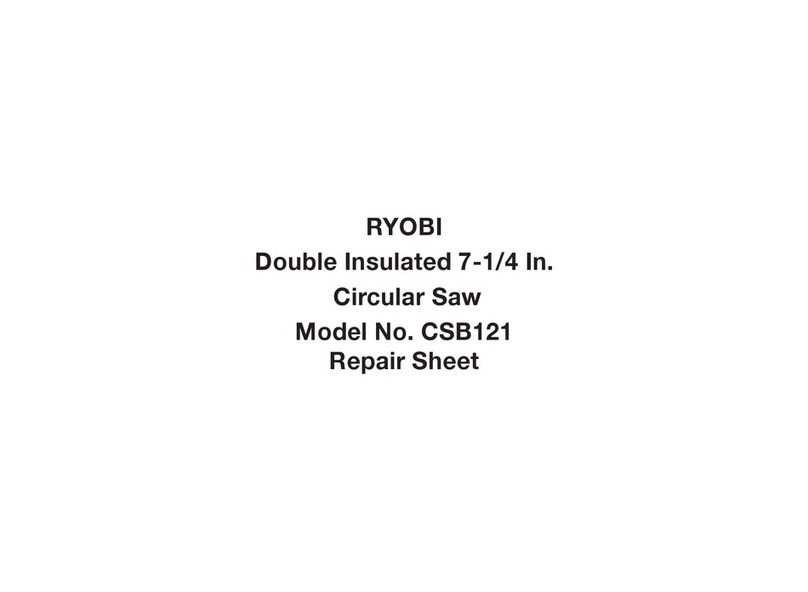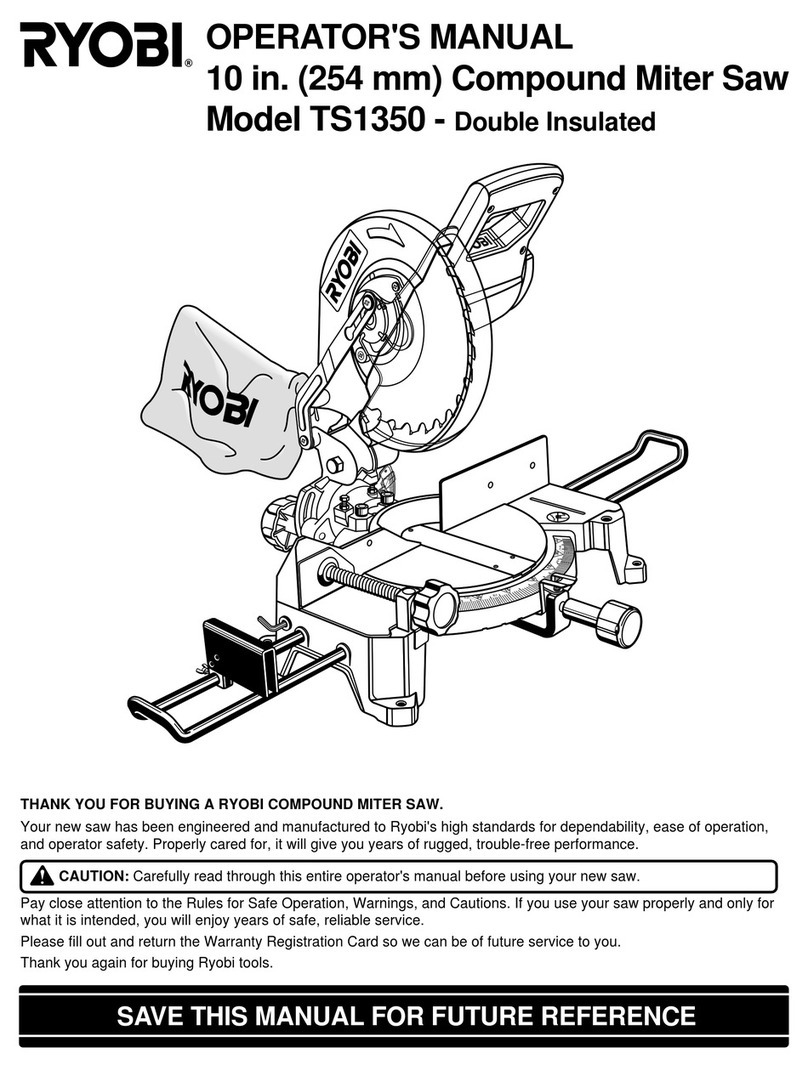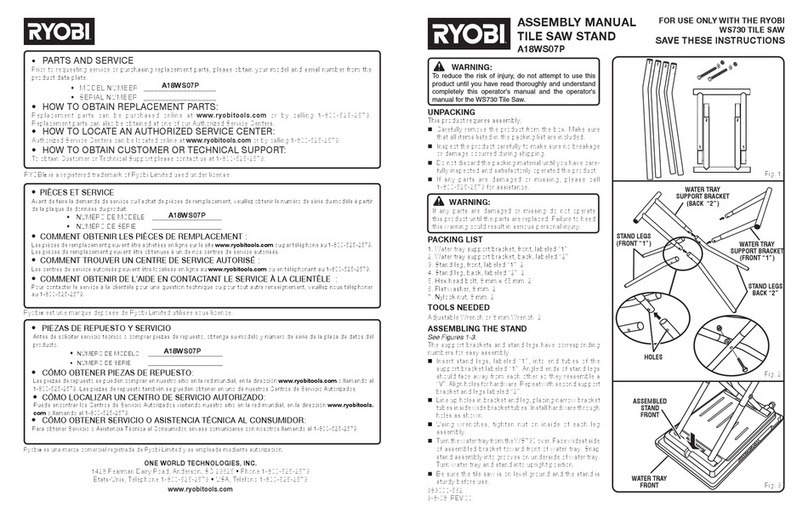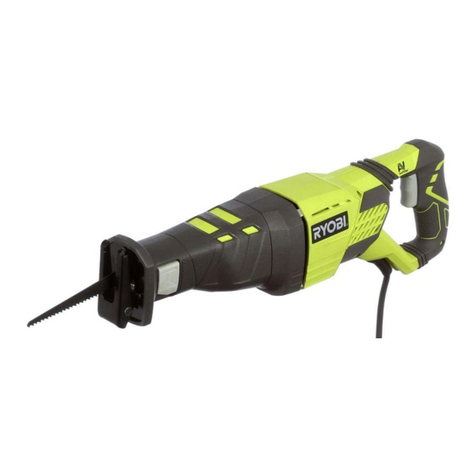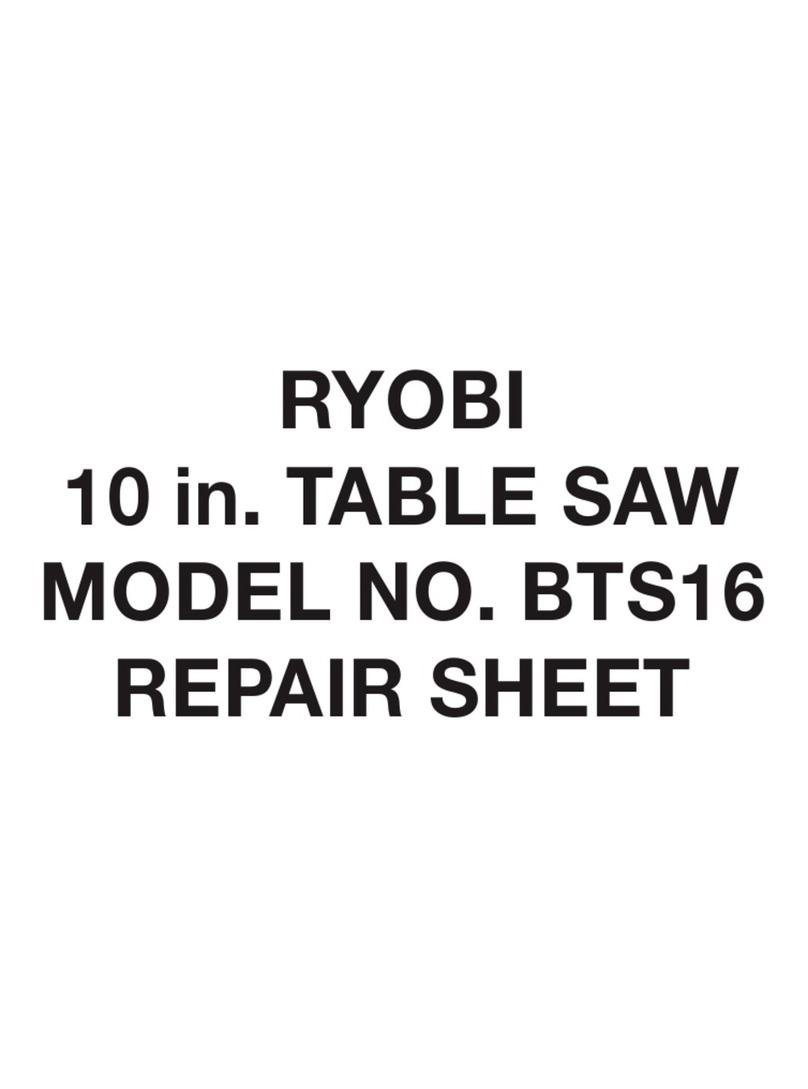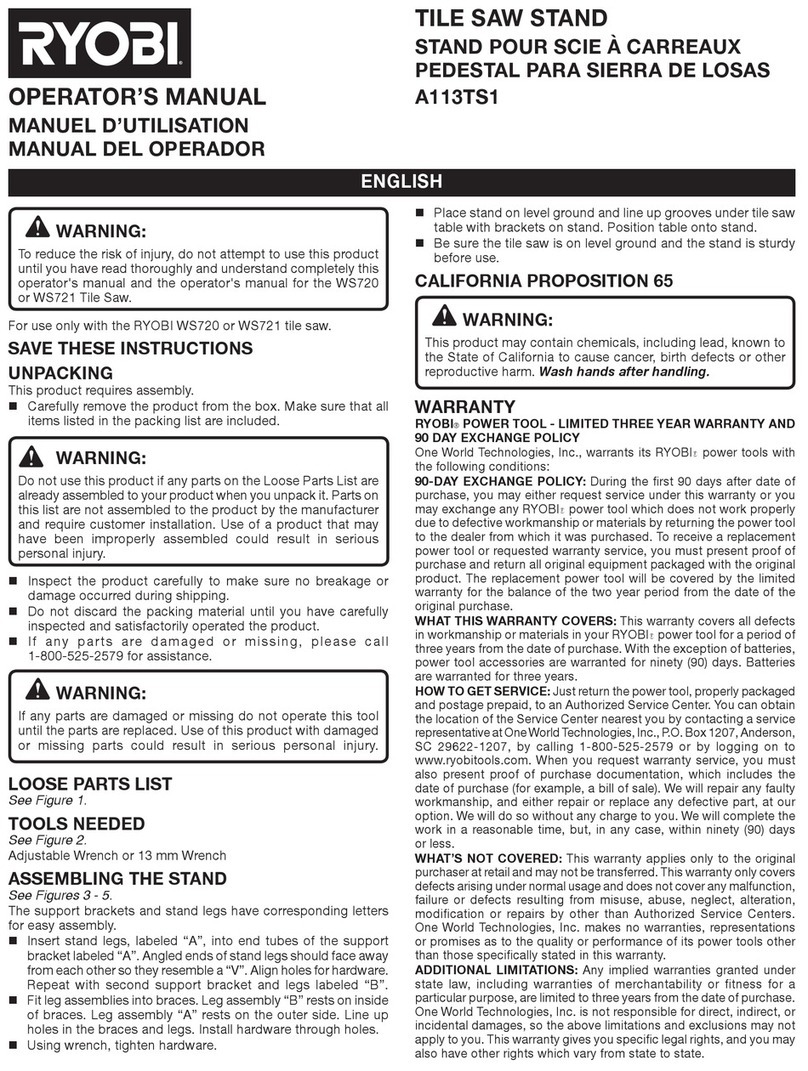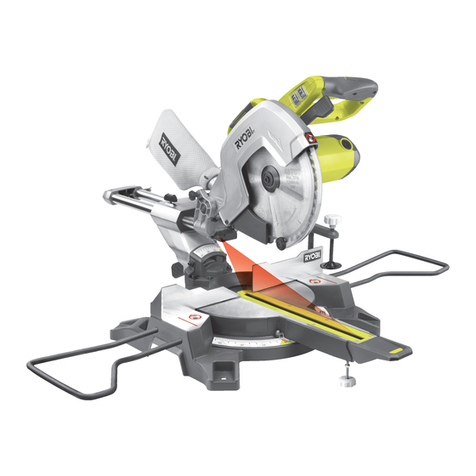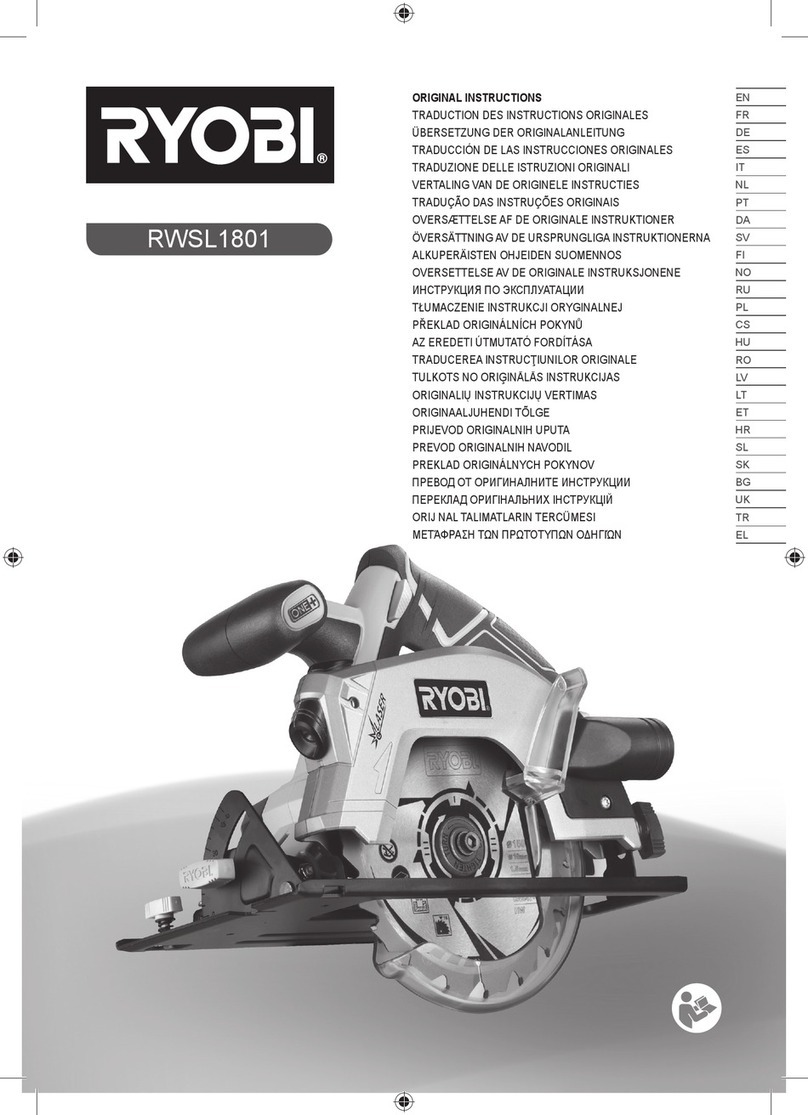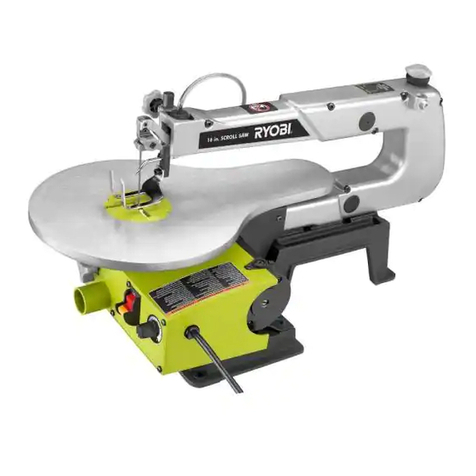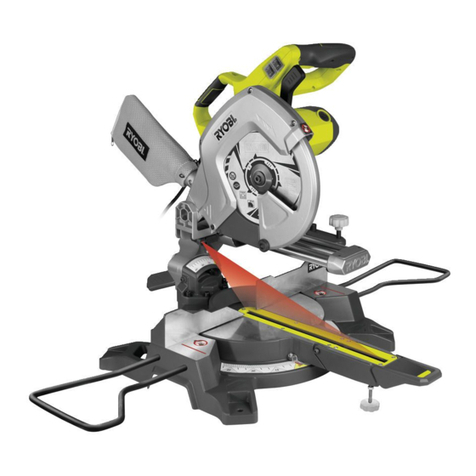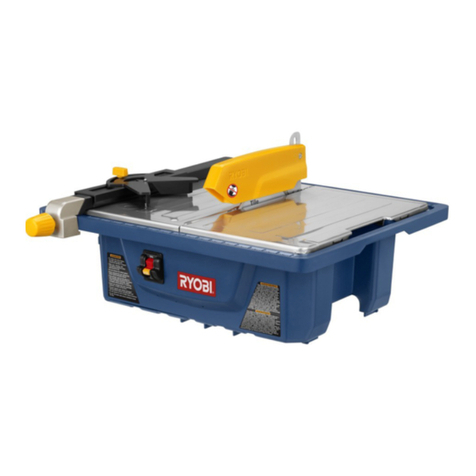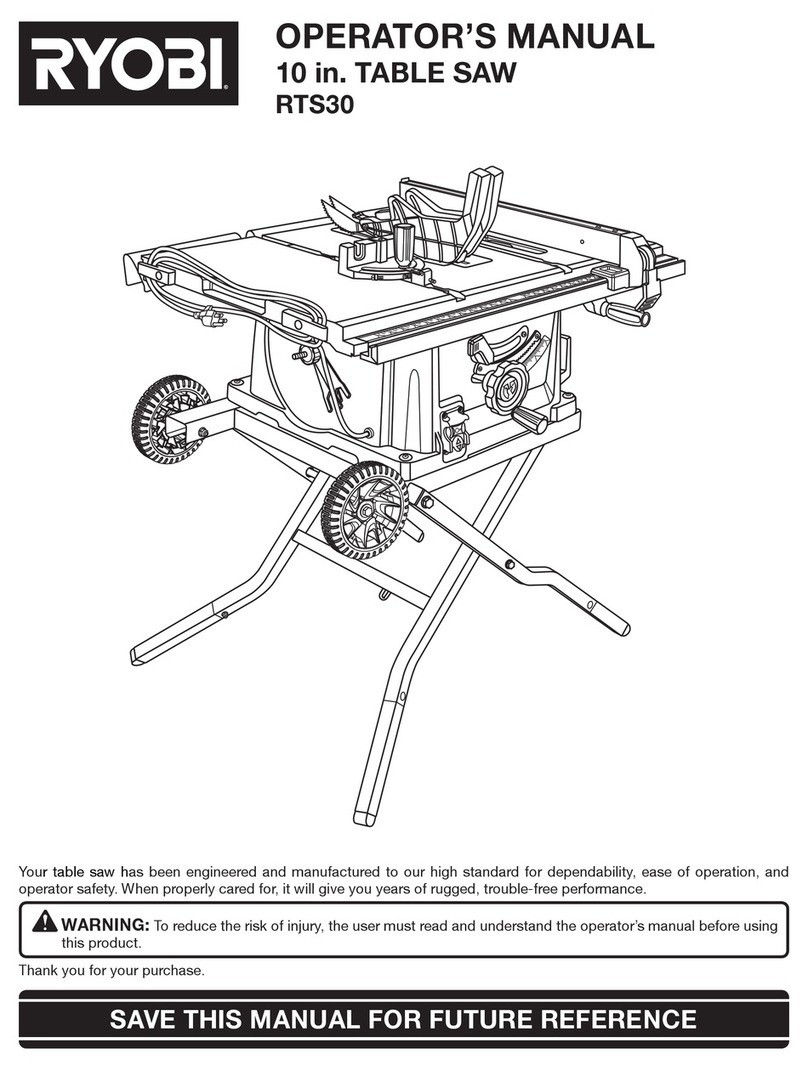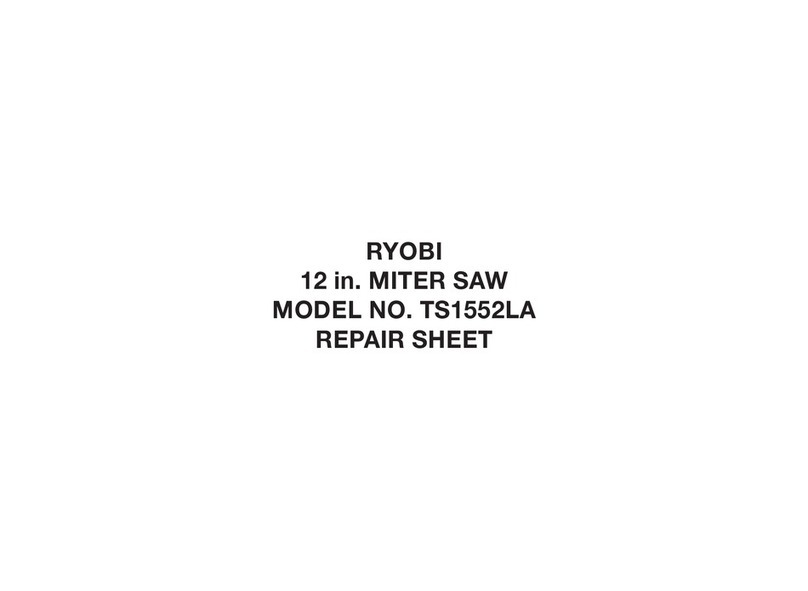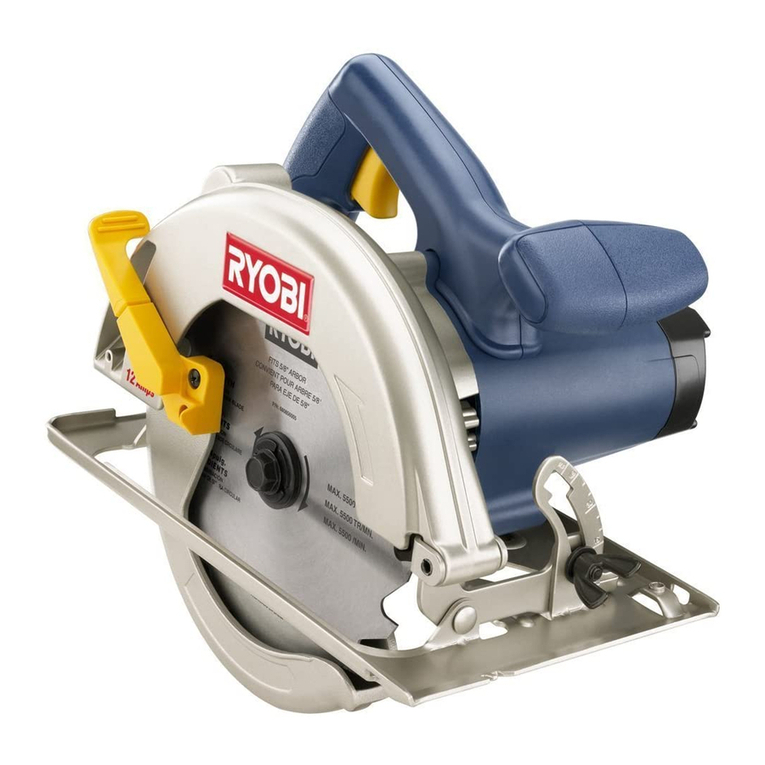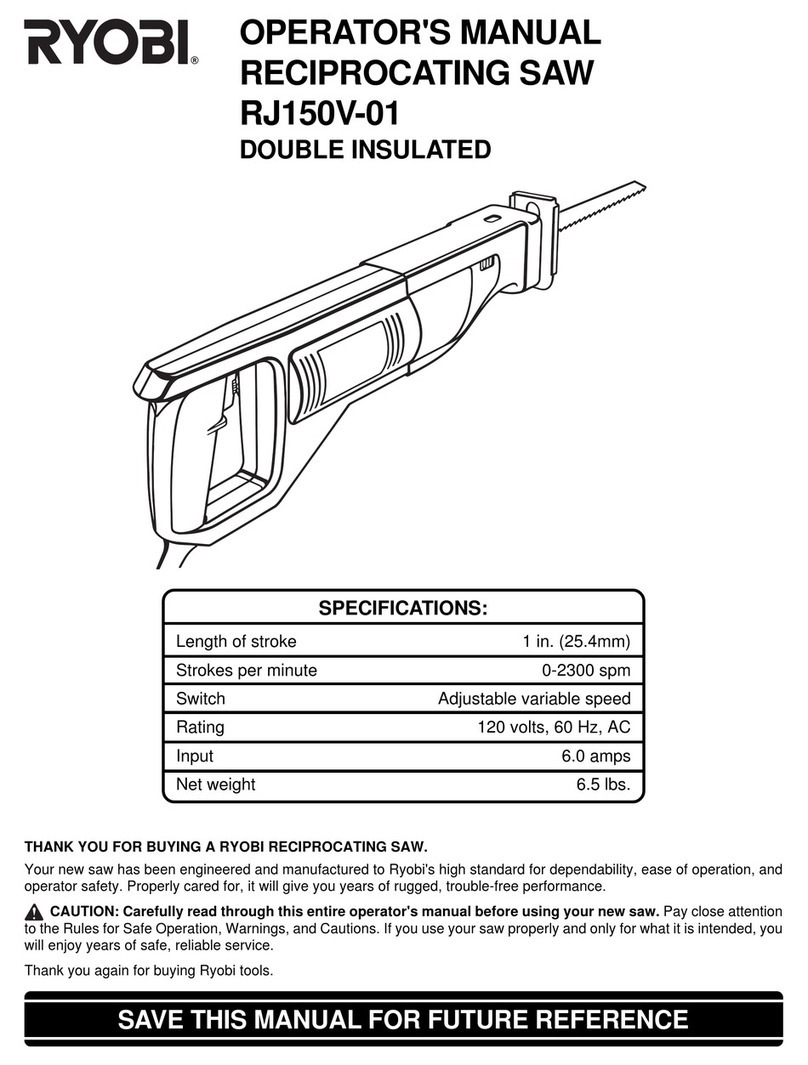
it on and off. Any power tool that cannot be controlled
with the switch is dangerous and must be repaired.
ŶDisconnect the plug from the power source and/
or remove the battery pack, if detachable, from
the power tool before making any adjustments,
changing accessories, or storing power tools. Such
preventive safety measures reduce the risk of starting
the power tool accidentally.
ŶStore idle power tools out of the reach of children
and do not allow persons unfamiliar with the power
tool or these instructions to operate the power tool.
Power tools are dangerous in the hands of untrained
users.
ŶMaintain power tools and accessories. Check for
misalignment or binding of moving parts, breakage
of parts and any other condition that may affect the
power tool’s operation. If damaged, have the power
tool repaired before use. Many accidents are caused
by poorly maintained power tools.
ŶKeep cutting tools sharp and clean. Properly
maintained cutting tools with sharp cutting edges are
less likely to bind and are easier to control.
ŶUse the power tool, accessories and tool bits etc.
in accordance with these instructions, taking into
account the working conditions and the work to
be performed. Use of the power tool for operations
different from those intended could result in a
hazardous situation.
ŶKeep handles and grasping surfaces dry, clean
and free from oil and grease. Slippery handles and
grasping surfaces do not allow for safe handling and
FRQWURORIWKHWRROLQXQH[SHFWHGVLWXDWLRQV
BATTERY TOOL USE AND CARE
ŶRecharge only with the charger specified by the
manufacturer. A charger that is suitable for one type
of battery pack may create a risk of fire when used with
another battery pack.
ŶUse power tools only with specifically designated
battery packs. Use of any other battery packs may
create a risk of injury and fire.
ŶWhen battery pack is not in use, keep it away from
other metal objects, like paper clips, coins, keys,
nails, screws or other small metal objects, that can
make a connection from one terminal to another.
Shorting the battery terminals together may cause
burns or a fire.
ŶUnder abusive conditions, liquid may be ejected
from the battery; avoid contact. If contact
accidentally occurs, flush with water. If liquid
contacts eyes, additionally seek medical help.
Liquid ejected from the battery may cause irritation or
burns.
ŶDo not use a battery pack or tool that is damaged or
modified.'DPDJHGRUPRGLILHGEDWWHULHVPD\H[KLELW
XQSUHGLFWDEOH EHKDYLRXU UHVXOWLQJ LQ ILUH H[SORVLRQ RU
risk of injury.
ŶDo not expose a battery pack or tool to fire
or excessive temperature. ([SRVXUH WR ILUH RU
WHPSHUDWXUHDERYH¶&PD\FDXVHH[SORVLRQ
ŶFollow all charging instructions and do not charge
the battery pack or tool outside the temperature
range specified in the instructions. Charging
improperly or at temperatures outside the specified
range may damage the battery and increase the risk
of fire.
SERVICE
ŶHave your power tool serviced by a qualified repair
person using only identical replacement parts.
This will ensure that the safety of the power tool is
maintained.
ŶNever service damaged battery packs. Service
of battery packs should only be performed by the
manufacturer or authorized service providers.
SAFETY INSTRUCTIONS FOR MITRE SAWS
ŶMitre saws are intended to cut wood or wood-like
products, they cannot be used with abrasive cut-
off wheels for cutting ferrous material such as bars,
rods, studs, etc. Abrasive dust causes moving parts
such as the lower guard to jam. Sparks from abrasive
cutting will burn the lower guard, the kerf insert and
other plastic parts.
ŶUse clamps to support the workpiece whenever
possible. If supporting the workpiece by hand, you
must always keep your hand at least 100 mm from
either side of the saw blade. Do not use this saw to
cut pieces that are too small to be securely clamped
or held by hand. If your hand is placed too close to
the saw blade, there is an increased risk of injury from
blade contact.
ŶThe workpiece must be stationary and clamped or
held against both the fence and the table. Do not
feed the workpiece into the blade or cut “freehand”
in any way. Unrestrained or moving workpieces could
be thrown at high speeds, causing injury.
ŶPush the saw through the workpiece. Do not pull the
saw through the workpiece. To make a cut, raise the
saw head and pull it out over the workpiece without
cutting, start the motor, press the saw head down
and push the saw through the workpiece. Cutting on
the pull stroke is likely to cause the saw blade to climb
on top of the workpiece and violently throw the blade
assembly towards the operator.
ŶNever cross your hand over the intended line of
cutting either in front or behind the saw blade.
Supporting the workpiece “cross handed” i.e. holding
the workpiece to the right of the saw blade with your left
hand or vice versa is very dangerous.
ŶDo not reach behind the fence with either hand
closer than 100 mm from either side of the saw
blade, to remove wood scraps, or for any other
reason while the blade is spinning. 7KH SUR[LPLW\
of the spinning saw blade to your hand may not be
obvious and you may be seriously injured.
ŶInspect your workpiece before cutting. If the
workpiece is bowed or warped, clamp it with the
outside bowed face toward the fence. Always make
certain that there is no gap between the workpiece,
fence and table along the line of the cut. Bent or
2| English
